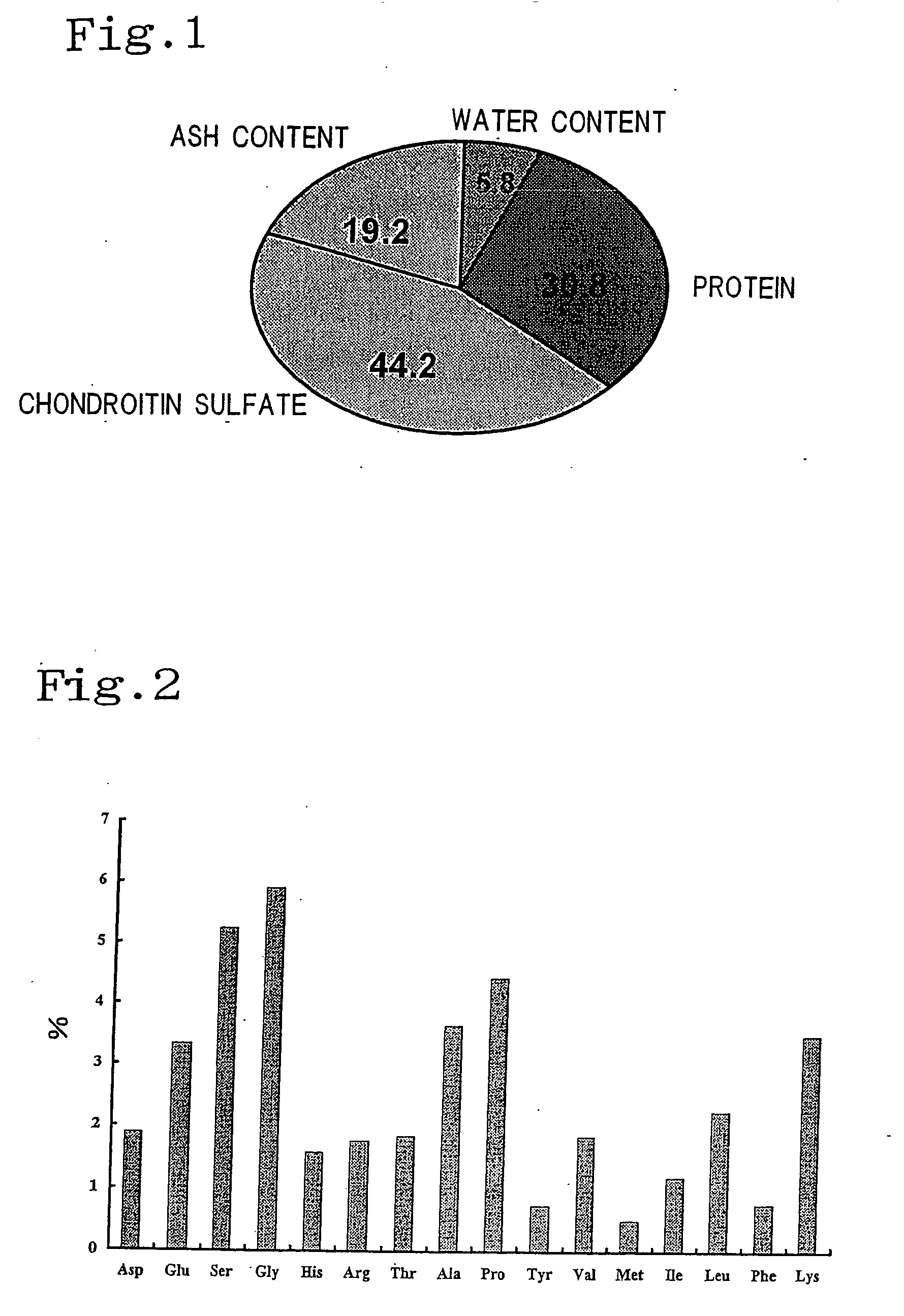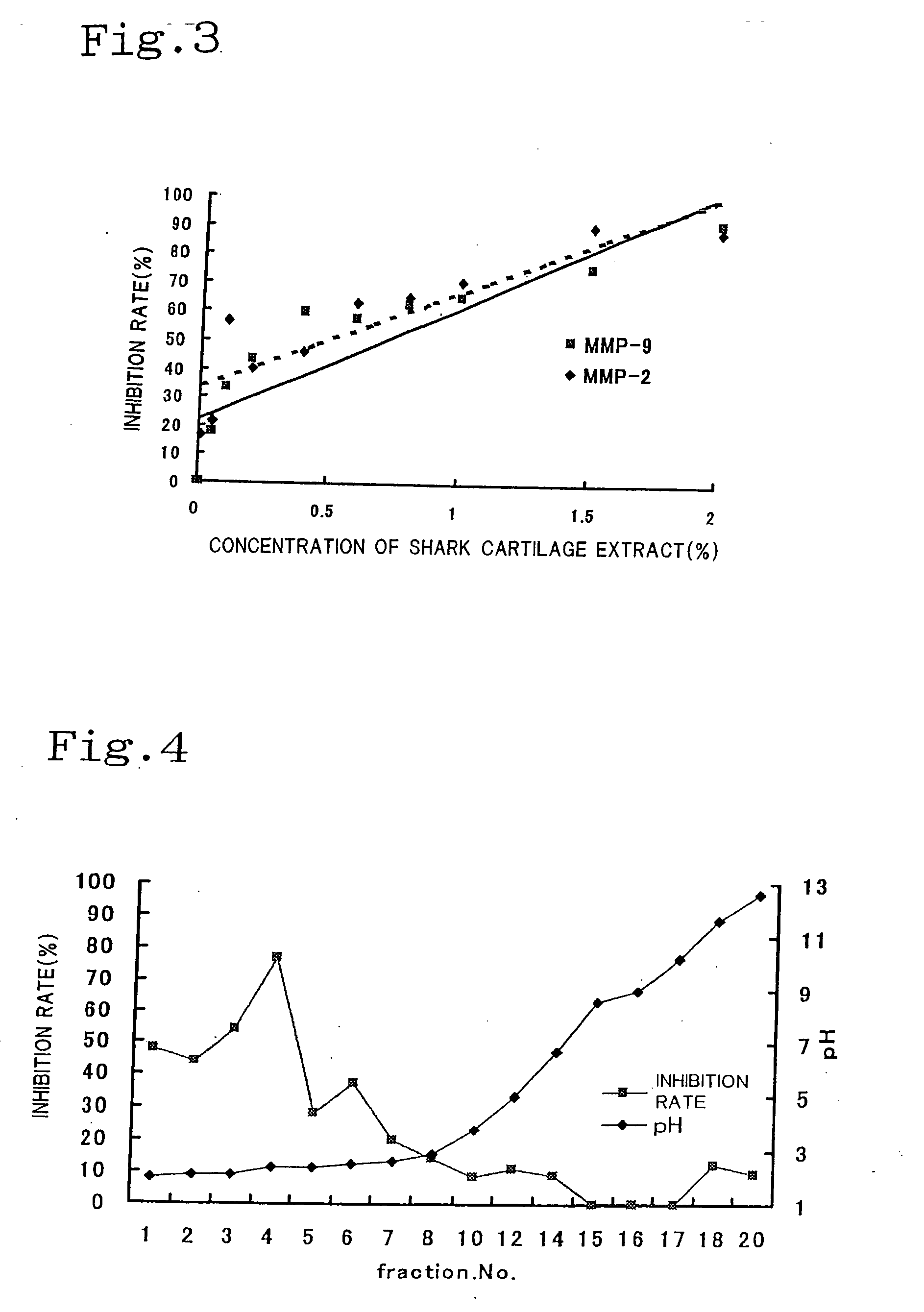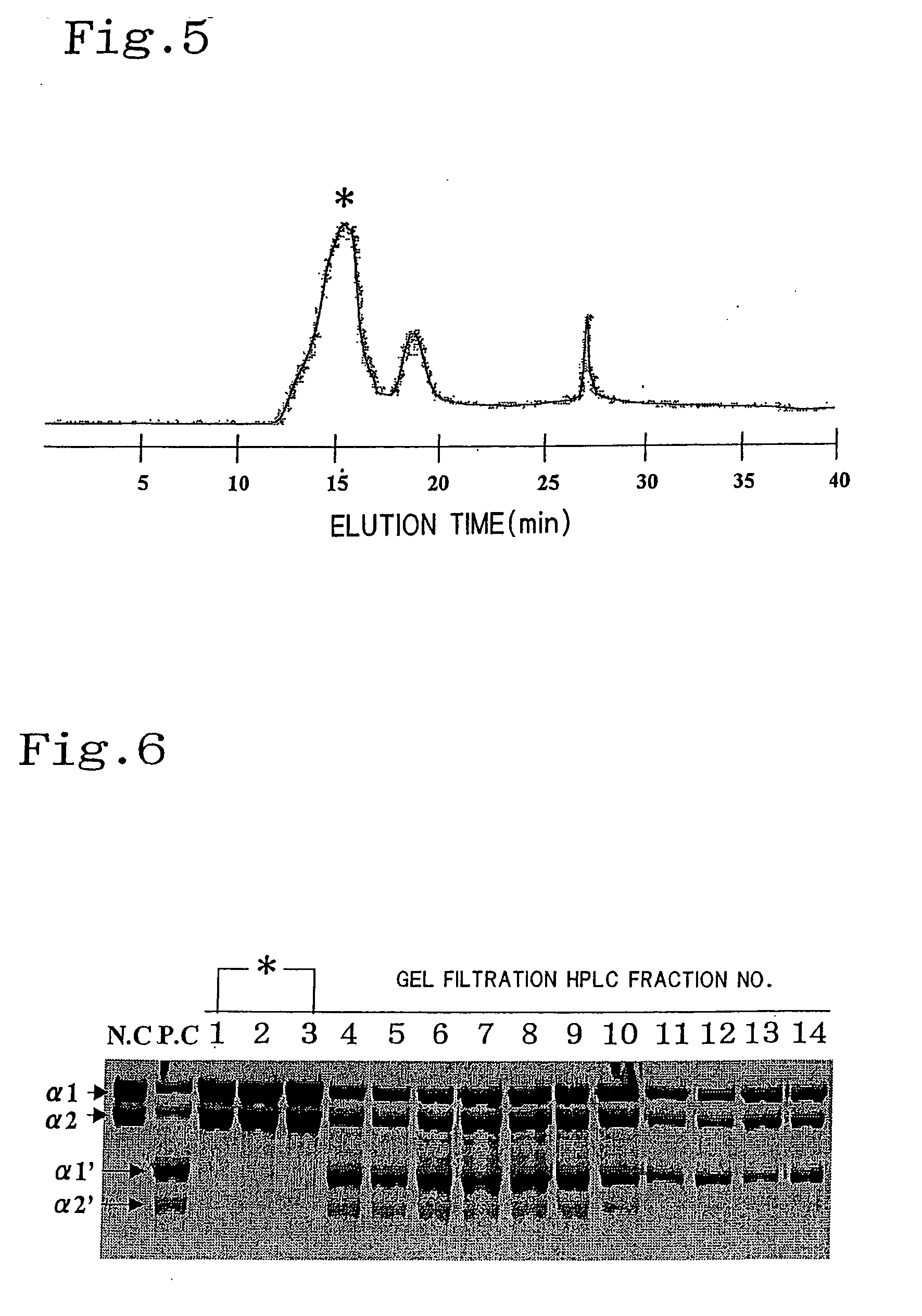Proteoglycan isolated from cartilaginous fish and process for producing the same
a technology of proteoglycan and cartilaginous fish, which is applied in the direction of drug composition, peptide/protein ingredient, peptide source, etc., can solve the problem of unproved mechanism of
- Summary
- Abstract
- Description
- Claims
- Application Information
AI Technical Summary
Benefits of technology
Problems solved by technology
Method used
Image
Examples
example 1
Isolation of Proteoglycan Derived from Shark Cartilage
(1) Preparation of Shark Cartilage Extract
[0088] Sun-dried shark cartilage (cartilage of blue shark) was coarsely ground into particles with an average particle diameter of about 5 mm by means of a coarse crusher (FM-1 manufactured by Hosokawamicron Corporation). The resulting coarse ground product was pulverized together with liquid nitrogen in a freeze crusher (LX-1 manufactured by Hosokawamicron Corporation) to form a fine powder with an average particle diameter of 25 μm. The average particle diameter was measured using Microtrac 9320HRA (manufactured by Leeds and Northrup). To 3 kg of the resulting fine powder was added 15 kg of distilled water and stirred at room temperature for 20 minutes, and then centrifuged (5 minutes, 3,000 rpm) so that a supernatant was obtained. To the residue was further added 10 kg of distilled water and stirred at room temperature for 20 minutes and then centrifuged in the same manner so that a...
example 2
Effects of Ingested Shark Cartilage Extract on Tumor-Bearing Hamsters
(1) Preparation of Experimental Diet
[0108] CE-2 powder purchased from CLEA Japan, Inc. was used as a basal diet. To the basal diet was added 0.2% or 0.4% by weight (hereinafter sometimes abbreviated as “%”) of the shark cartilage extract prepared in Section (1) of Example 1, and the mixture was used as an experimental diet. The hamsters as described below were freely fed on the basal diet or the experimental diet and water. Each hamster fed on the experimental diet was examined for weight and the amount of diet intake. Between the same groups, there was found no significant difference in weight or the amount of diet intake.
(2) Experimental Animals
[0109] Syrian golden hamsters (6-week old) were purchased from Nippon SLC Co., Ltd. Four or five hamsters were housed in an animal room of a plastic cage controlled at a room temperature of 24±1° C. and a humidity of 60±5% on a 12:12-hr light:dark cycle. After housed...
example 3
Amount of Haptoglobin in Blood Serum of Hamsters
[0121] No tumor-bearing hamsters were fed on the shark cartilage extract for 2 weeks, and then their blood serum was separated by SDS-PAGE and stained with CBB. As a result, a band of about 80 kDa increased in the experimental diet group relatively to that in the basal diet group. The 80 kDa band was cut out and subjected to structural analysis (with a protein sequencer PPSQ 21 manufactured by Shimadzu Corporation). As a result, it was found that the 80 kDa band corresponded to endogenous haptoglobin of the hamster (α chain: VDLSNDAMDTADDS (SEQ ID NO: 1), β chain: IIGGSLDAKGSFPW (SEQ ID NO: 2)).
[0122] Haptoglobin has the function of biding hemolysis-induced oxidized hemoglobin and neutralizing oxidative angiopathy toxicity and is used as a maker protein not only for haemolysis but also for many diseases such as malignancy of cancer recently (Pathol A Oncol Res. 1998;4(4):271-6; Br J Cancer. August 1991;64(2):386-90). It is also repor...
PUM
| Property | Measurement | Unit |
|---|---|---|
| molecular weight | aaaaa | aaaaa |
| average particle diameter | aaaaa | aaaaa |
| molecular weight | aaaaa | aaaaa |
Abstract
Description
Claims
Application Information
 Login to View More
Login to View More - R&D
- Intellectual Property
- Life Sciences
- Materials
- Tech Scout
- Unparalleled Data Quality
- Higher Quality Content
- 60% Fewer Hallucinations
Browse by: Latest US Patents, China's latest patents, Technical Efficacy Thesaurus, Application Domain, Technology Topic, Popular Technical Reports.
© 2025 PatSnap. All rights reserved.Legal|Privacy policy|Modern Slavery Act Transparency Statement|Sitemap|About US| Contact US: help@patsnap.com



